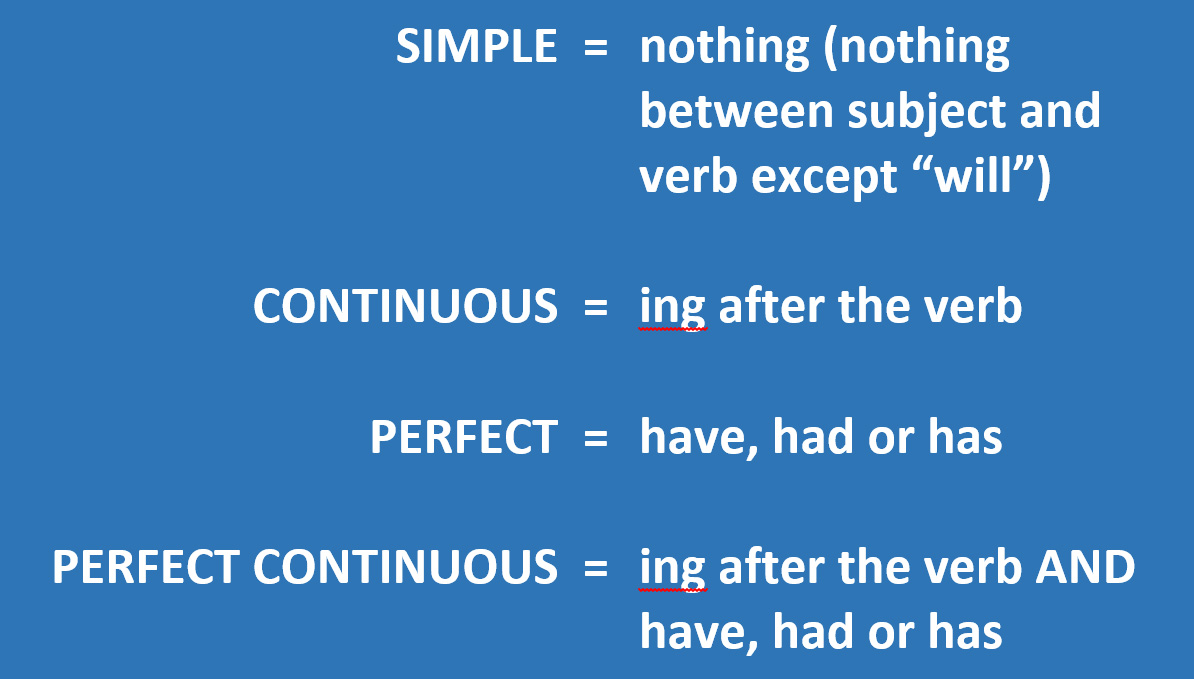Tenses – going one stage further
For many types of exam, you do not need to know the following, but it’s still very useful to know.
In response to this sentence:
It’s late at night and you are sitting up in bed
wouldn’t it be great to be able to state correctly in an exam that this is
SECOND PERSON CONTINUOUS PRESENT TENSE?
You can learn about second person (and first and third person) in our section Perspective, First, second and third person.
But to be able to analyse sentences with this kind of precision, you need to know the following:

SIMPLE means what it says – just a simple statement that someone or something did something, e.g. “Fred tied the knot”; “Billy runs a mile”; “Jill eats the apple”. There is NOTHING between the subject (the person or thing that does something) and the verb (the action that the subject does) EXCEPT in the future tense, when “will” or “shall” is used, e.g. “Fred will run a mile”; “You shall go to the ball”.
CONTINUOUS means the action or state being described by the verb is or was CONTINUING, e.g. “James is watering the garden”; “Sarah has been watching television.”
Note: There is no difference between continuous and progressive tenses in English grammar. They mean the same thing. Something that progresses, continues.
PROGRESSIVE = CONTINUOUS
PERFECT is in effect the opposite of CONTINUOUS – it means the action has been completed, or PERFECTed, e.g. “Phil extinguished the fire”; “David and Davina had climbed the mountain”.
PERFECT CONTINUOUS is, as the name suggests, a combination of perfect (i.e., the action is completed) and continuous (action ongoing), which might sound impossible – but there is an easy explanation! It means that an action that WAS continuing at the time has now ended, e.g. “I had been winding up the grandfather clock”; “They were minding their own business up until then”.




